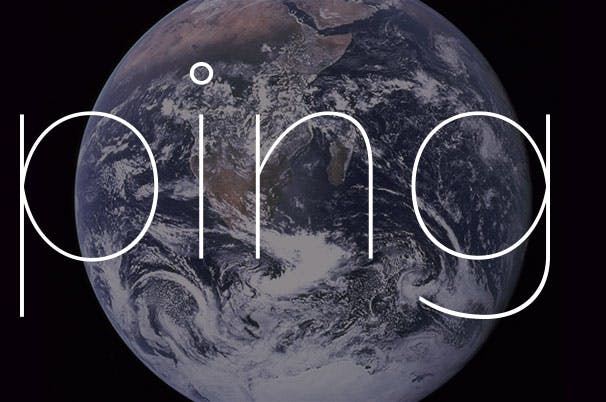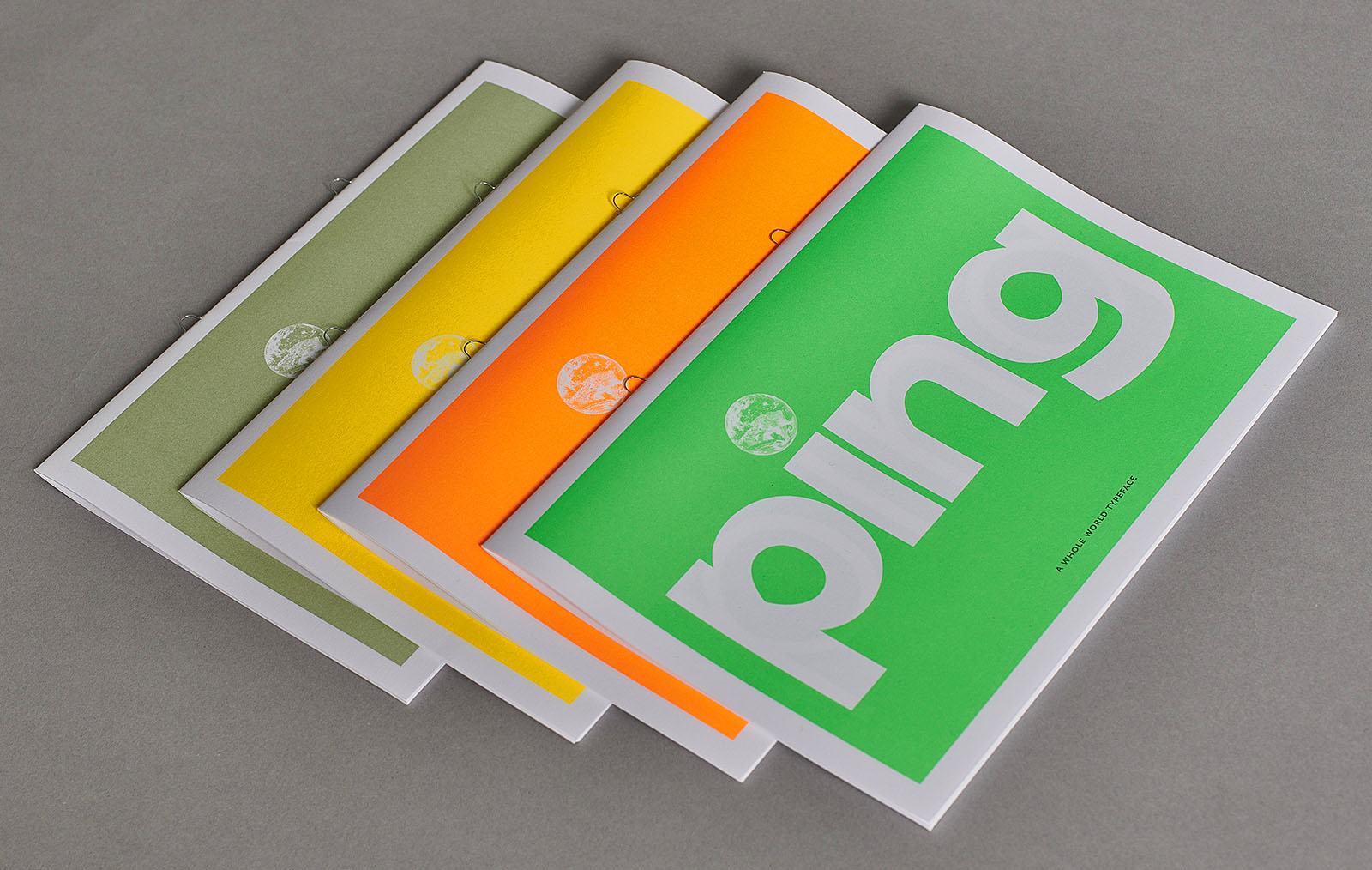Ping, a whole-world typeface

Animation by Sascha Lobe, Pentagram, London.
Ping is a fluid sans serif font with a geometric structure, but unlike other geometric typefaces, Ping doesn’t reject the influence of the human hand. Ping’s simplified letterforms are constructed with the least number of pen strokes; for example the lowercase letters ‘a’, ‘d’, ‘p’, ‘b’ and ‘g’ are drawn without lifting the pen at all.

Ping includes nine weights, each with italics slanted at the unusually steep angle of 14° and featuring optically adjusted modulation of the curves and diagonal strokes.

Ping is resolutely modern, rational but not faceless, full of respect for the past while exploring the possibilities of the present moment. Read the essay about the background and inspiration for designing Ping.


Ping has a very large x-height that matches the height of the small caps. Influenced by modern typographic designs, a special unicase OpenType substitution feature is available that mixes lowercase letters and small caps, creating a fluid mix of letterforms that occupy the space between the baseline and the x-height. See also other OpenType features in Ping.

Get a closer look at the typeface in this PDF or online presentation, or get the beautiful printed type specimen designed by Sascha Lobe at London Pentagram. (Also: if you buy the specimen and decide that you want the font, you can apply the price of the specimen to your font purchase).

Following the example of versatile sans typefaces which transcend national borders, Ping also aims to be a truly international typeface, supporting not only hundreds of Latin-based languages, but also Arabic, Armenian, Chinese (Simplified and Traditional), Cyrillic, Devanagari, Greek, Korean, Hebrew and Japanese. The proportions of the Latin shapes were adjusted to facilitate seamless integration with all the above-mentioned writing scripts; rather than merely giving other languages their version of a Latin-based design, Ping was constructed with a global perspective from the ground up, giving it a unique voice across different cultures and making it useful to designers worldwide.

Ping was designed by Peter Biľak, who created the Latin, Greek, Cyrillic and Armenian versions, assisted by Nikola Djurek, who was of invaluable help with the production of the fonts. Bahman Eslami and Rafał Buchner provided technical assistence. The Hebrew version (designed by Daniel Grumer), and Armenian version (designed in consultation with Khajag Apelian and Gor Jihanian) are available immediately. Arphic Technology’s UD Jing Xi Hei, a Chinese, Japanese and Korean typeface modified to match Ping’s proportions, and will be available later this Spring. The Arabic version (designed by Kristyan Sarkis) and Devanagari version (designed by Parimal Parmar) will be released later in 2019.




